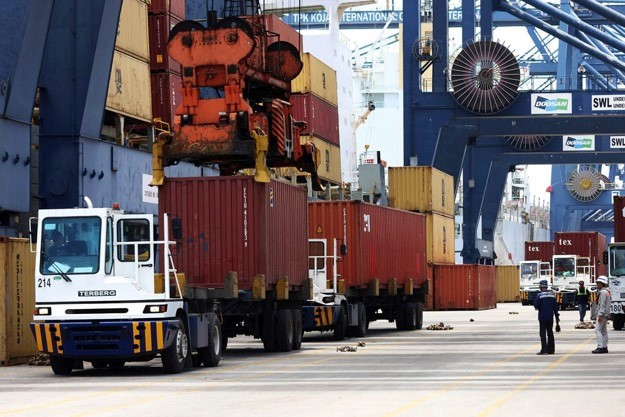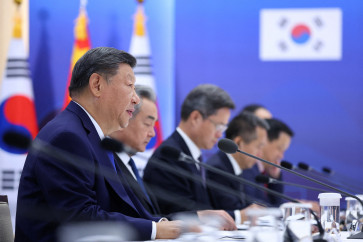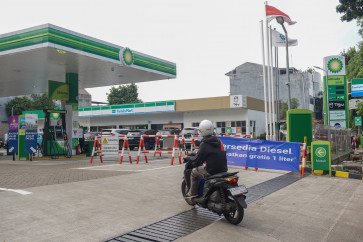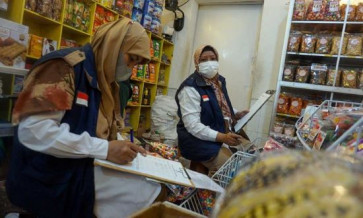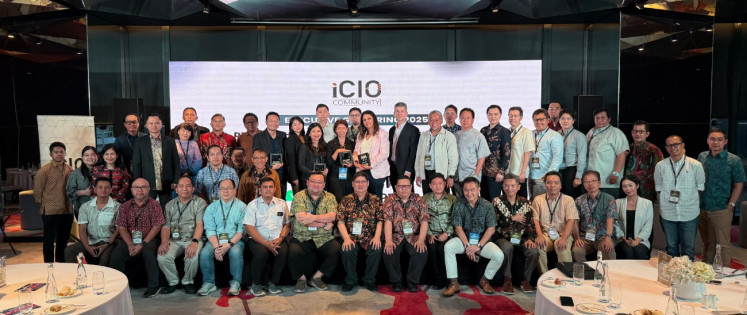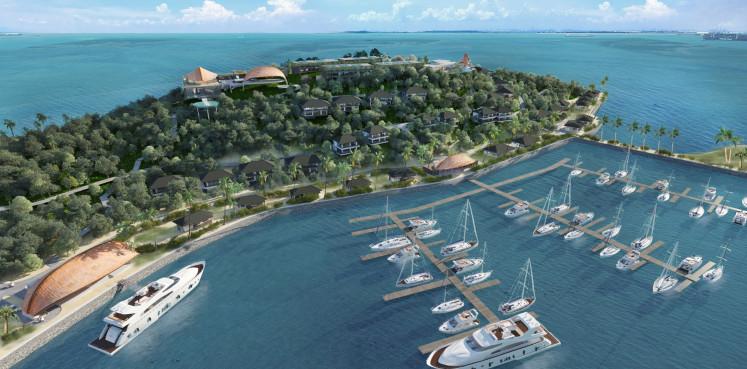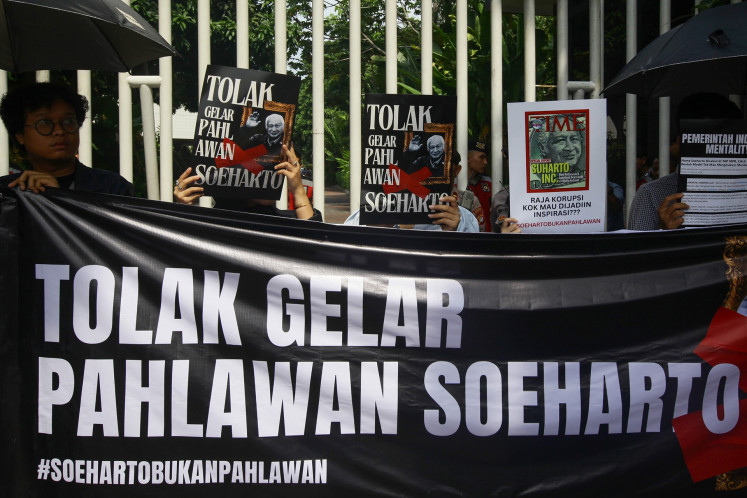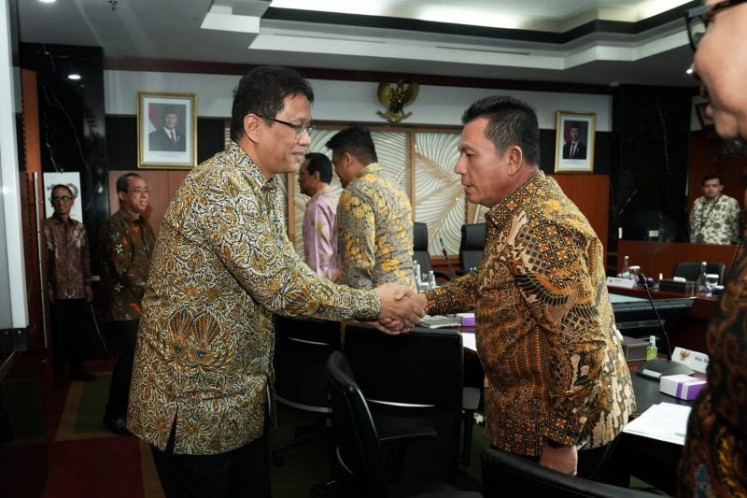Popular Reads
Top Results
Can't find what you're looking for?
View all search resultsPopular Reads
Top Results
Can't find what you're looking for?
View all search resultsDriving economic growth to 8 percent by reducing land logistics cost
Change text size
Gift Premium Articles
to Anyone
A
study by Tenggara Strategics titled “Optimalisasi Penurunan Biaya logistik Darat” highlights the critical role of reducing land logistics expenses in achieving President Prabowo Subianto’s bold 8 percent economic growth target, which faces a significant challenge from Indonesia’s notoriously high logistics costs.
At a press conference on Nov. 22, 2024, Tenggara Strategics senior researcher Eva Novi Karina presented the study’s findings alongside key experts, including Yose Rizal Damuri, executive director of the Centre for Strategic and International Studies (CSIS) Jakarta and Widodo Ramadyanto, financing working group coordinator at the Finance Ministry’s Fiscal Policy Agency.
Logistics costs in Indonesia remain high compared to neighboring countries, though government data show that the country’s logistics costs have decreased to 14.1 percent of gross domestic product (GDP). Nevertheless, when combined with export logistics costs that amount to 8.98 percent of GDP, Indonesia's total logistics costs reach 23.08 percent of GDP. In comparison, Malaysia’s logistics costs total 13 percent of GDP, while Singapore's reach just 8 percent.
Indonesia’s high logistics costs are largely due to the sector’s reliance on land transportation, which accounts for 50 percent of overall costs, or roughly 7 percent of GDP. Land transportation is primary mode for transporting goods domestically, especially in the final stages of distribution.
The Tenggara Strategics study identified fiscal incentives as a key strategy in reducing logistics costs. For instance, Finance Minister Regulation (PMK) No. 71/2022 offers value-added tax (VAT) reductions for freight forwarding services and parcel delivery, which eventually benefits small and medium e-commerce businesses.
The government has shown its commitment through various fiscal policies to help lower logistic costs, mostly though reductions for VAT and income tax. After PMK No. 71/2022 was enacted, Rp 26 trillion (approximately US$1.69 billion) was earmarked for tax incentives for transportation and warehousing in 2023, the fourth-largest after incentive allocations for manufacturing, agriculture and financial services.
“Rp 26 trillion in the state budget is recorded as government spending, which the transportation and warehousing sector enjoyed in the form of paying a lower tax rate or even no tax at all. This is one of our [efforts] to lower logistic costs,” Widodo explained.
Tax incentives are just one out of the five types of budgetary support the government offers to the logistic industry. The other four are fuel subsidies for trucks and trains; logistics digitalization funds, including through the National Logistics Ecosystem (NLE) program; direct financing of logistics infrastructure development and expansion; and indirect financing of infrastructure development through incentivized private sector participation.
Even with these strategies, logistic costs in Indonesia remain high, and Yose of the CSIS warned of potential setbacks if these incentives were withdrawn.
“The transportation and logistics services sectors are the vein of economic growth. The fiscal incentives provided have created greater opportunities for [the logistics] sector to be more efficient. If the incentives supporting cost reduction in the logistics sector are discontinued, transportation costs will rise further,” he said.
Yose also suggested that the government find more ways via fiscal policies to lower costs further, especially land transportation costs as the greatest contributor to domestic logistics costs, to support the President’s 8 percent economic growth target.
Optimizing Indonesia’s logistics ecosystem remains a critical step in securing sustainable and inclusive economic advancement, and by focusing on reducing logistics costs, Indonesia could not only meet its ambitious growth target, but also establish itself as a leading player in the ASEAN economy.

